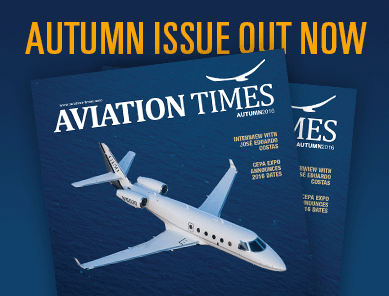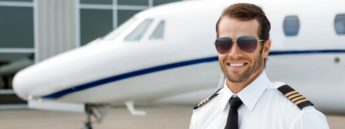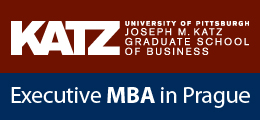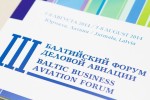Airbus’ A320 MSN001 flight-test aircraft conducts latest “i4D” flight trials with SESAR members
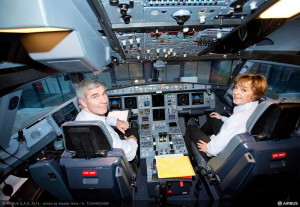 Following on from flight trials in 2012, Airbus’ A320 ‘MSN001’ flight-test aircraft has undertaken the second “initial 4D” (i4D) trajectory flight trial as part of a joint project with its members in the EU-funded Single European Sky ATM Research (SESAR) Joint Undertaking (SJU). These members include: Thales, NORACON1, Maastricht Upper Area Control Centre (MUAC), Indra, Eurocontrol, Honeywell and Airbus.
Following on from flight trials in 2012, Airbus’ A320 ‘MSN001’ flight-test aircraft has undertaken the second “initial 4D” (i4D) trajectory flight trial as part of a joint project with its members in the EU-funded Single European Sky ATM Research (SESAR) Joint Undertaking (SJU). These members include: Thales, NORACON1, Maastricht Upper Area Control Centre (MUAC), Indra, Eurocontrol, Honeywell and Airbus.
The main benefits of i4D are the significant reduction of fuel burn and C02 emissions, in line with SESAR’s target to reduce the environmental impact per flight by 10 percent, a decrease of delays and therefore shorter and smoother flights for passengers. These flight tests offer a concrete solution towards improving the existing European air traffic system which is reaching its capacity limit.
For this latest trial, the outward route, Toulouse – Copenhagen – Stockholm (LFBO – EKCH – ESSA) was flown with a Honeywell flight management system (FMS) and the return journey (ESSA – EKCH – LFBO) was flown with a Thales FMS. The Airbus crew on board the aircraft comprised: Capt. Philippe Pellerin, Sylvie Loisel-Labaste, Jean-Francois Bousquié and Jean-Francois Azzopardi. They were also joined on the return to Toulouse by Didier Poisson from Thales as co-pilot.
This second flight trial validates further that the sharing of trajectory information between the air and ground can enable a safer and more efficient handling and certainty of flight profiles. The flight trial confirmed that i4D offers important safety and environmental gains, with reductions in fuel costs, increased flight predictability and overall network efficiency.
The core objective of i4D is to ensure that aircraft flight trajectories remain synchronized between air and ground throughout all aspects of flight, thus helping to facilitate air traffic management which is more reliable, cost-efficient, and environmentally friendly. This latest i4D flight is part of a complete validation campaign, in the framework of the SESAR initiative, to validate within a real traffic situation both technical and operational aspects within the SESAR programme. If all validation exercises prove successful, i4D should be implemented by the entire European aviation industry around 2018.
The world’s first flight using a four-dimensional optimized and upgraded Air Traffic Management (ATM) technology took place in February 2012 with Airbus’ dedicated A320 test aircraft flying from Toulouse to Copenhagen and Stockholm.
i4D is the first step in developing one of the essential pillars of the SESAR programme: conciliating the increasing traffic density with the efficiency of flights. It is the result of close collaboration between SESAR members. One of Airbus’ key roles has been to test the upgraded flight management systems (navigation) and communication systems with each other and to integrate them into the real aircraft architecture.
Source: Airbus
Share the post "Airbus’ A320 MSN001 flight-test aircraft conducts latest “i4D” flight trials with SESAR members"
Publishing or copying the content of AVIATION Times without a written electronic permission is strictly forbidden. If you have any information, tips, videos, photos or your press releases for us contact us at news@aviation-times.aero.
AVIATION TIMES © Copyright 2012 - 2025

